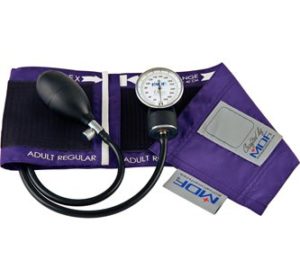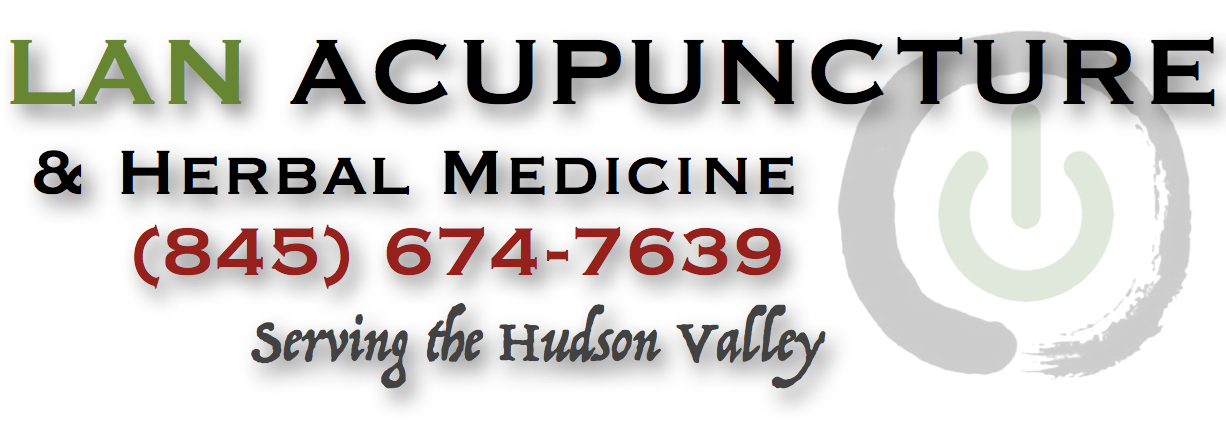TweetShare
Heilongjiang Woniutuzhen Hospital researchers find acupuncture effective for the treatment of essential hypertension. In a controlled study, patients received acupuncture treatments for six weeks and achieved significantly lower ambulatory blood pressure (ABP), sitting blood pressure, and overall heart rates after treatment with acupuncture. ABP was measured with an ABP monitor and sitting blood pressure was measured with a sphygmomanometer.
Based on the pre-treatment and post-treatment blood pressure results, the treatment efficacy for each patient was categorized into 1 of 3 tiers:
- Significantly effective: Diastolic blood pressure (DBP) decreased by >20 mm Hg, or decreased by ≥10 mm Hg but returned to healthy DBP range.
- Effective: DBP decreased by 10 – 20 mm Hg, or decreased by <10 mm Hg but returned to healthy DBP range.
- Not effective: Did not fulfill requirements for above tiers.
 The total treatment effective rate was 87.1%, with 61 out of 70 patients achieving a significant drop in blood pressure after acupuncture treatments (P < 0.05). Additionally, the mean 24-hour heart rate decreased from 77.4 ± 6.1 beats/min before treatment to 71.9 ± 5.0 beats/min after treatment. The decrease in heart rate was statistically significant (P < 0.05). A total of 70 patients from Heilongjiang Woniutuzhen Hospital were treated and evaluated.
The total treatment effective rate was 87.1%, with 61 out of 70 patients achieving a significant drop in blood pressure after acupuncture treatments (P < 0.05). Additionally, the mean 24-hour heart rate decreased from 77.4 ± 6.1 beats/min before treatment to 71.9 ± 5.0 beats/min after treatment. The decrease in heart rate was statistically significant (P < 0.05). A total of 70 patients from Heilongjiang Woniutuzhen Hospital were treated and evaluated.
For Baihui, a 0.25 x 50 mm disposable filiform needle was transversely inserted to a depth of 20 mm. For all other acupoints, 0.30 x 40 mm needles were used. For Fengchi, the needle was oriented toward the laryngeal prominence and inserted to a depth of 25 mm. Taichong and Hegu were perpendicularly inserted to a depth of 10 – 20 mm. Sanyinjiao and Quchi were perpendicularly inserted to a depth of 15 – 30 mm. For Taichong and Quchi, the needles were manipulated after insertion with ticha (lifting and thrusting) and nianzhuan (twisting and rotating) attenuation techniques. The ping bu ping xie (mild reinforcement and attenuation) technique was applied for all other acupoints. Needles were retained for 30 minutes per acupuncture session after the application of manual needle stimulation. One acupuncture session was conducted every other day for a total of six weeks. Consistent with Traditional Chinese Medicine (TCM), patients were instructed to have a ten minute meditation session (anytime between 8 am to 9 am), once per week, over the course of the six week treatment period.
Blood Pressure Readings
Blood pressure was measured before and after treatment. Sitting blood pressure was taken three times with a five minute interval between each reading, taking the mean value of the three measurements as the final recorded blood pressure. For the 24 hour ABP, a 24 hour ABP monitor was used to measure blood pressure every 20 minutes from 8 am to 10 pm, and every 30 minutes from 10 pm to 8 am. Acupuncture achieved an 87.1% total treatment effective rate.
Intractable Hypertension
In a related investigation, Shandong Jining 1st People’s Hospital researchers tested the efficacy of acupuncture on patients with intractable high blood pressure. The trial finds acupuncture effective for increasing patient responsiveness to antihypertensive agents, reducing overall blood pressure, and alleviating overall clinical symptoms. Based on blood pressure readings and other symptomatic improvements, the treatment efficacy for each patient was categorized into 1 of 3 tiers:
- Significantly effective: Clinical symptoms absent. Blood pressure lowered to normal range (140/90 mm Hg) with no use of antihypertensive agents or use of 1 antihypertensive agent. No hypertension relapse within 6 months post-treatment.
- Effective: Significant improvement in clinical symptoms. Blood pressure lowered to normal range with use of two or less antihypertensive agents. No hypertension relapse within 6 months post-treatment.
- Not effective: No improvement of clinical symptoms. Blood pressure remains above normal range.
Treatment Effectiveness
The treatment effective rate for each body constitution group was derived by the following formula:[Significantly effective + Effective] / [Total number of patients in group] * 100%. Treatment efficacy was subcategorized according to three TCM (Traditional Chinese Medicine) differential diagnostic considerations: phlegm-dampness, liver-heat, yin-yang deficiency. The treatment effective rates were 91.49% for the phlegm-dampness group, 88.89% for the liver-heat group, and 88.24% for the yin-yang deficiency group. The treatment effective rates did not differ significantly across TCM diagnostic subgroups (P > 0.05), reflecting that acupuncture is equally effective for the treatment of hypertension across multiple diagnostic considerations.
Blood Pressure Before And After
Prior to treatment, the mean systolic blood pressures (SBP) were 178.50 ± 14.63 mm Hg for the phlegm-dampness group, 178.31 ± 13.94 mm Hg for the liver-heat group, and 177.82 ± 14.77 mm Hg for the yin-yang deficiency group. The mean diastolic blood pressures (DBP) were 98.71 ± 13.51 mm Hg for the phlegm-dampness group, 99.40 ± 13.64 mm Hg for the liver-heat group, and 101.11 ± 10.32 mm Hg for the yin-yang deficiency group. The data shows that the blood pressures for each group were equivalent before treatment (P > 0.05).
After treatment, the mean SBPs were 134.42 ± 10.92 mm Hg for the phlegm-dampness group, 135.13 ± 9.87 mm Hg for the liver-heat group, and 134.7 ± 10.038 mm Hg for the yin-yang deficiency group. The mean DBPs were 85.60 ± 6.88 mm Hg for the phlegm-dampness group, 85.63 ± 6.43 mm Hg for the liver-heat group, and 85.58 ± 7.03 mm Hg for the yin-yang deficiency group. The measurements indicate that acupuncture effectively lowers blood pressure (P < 0.05) and produces equally desirable treatment results in all three body constitutions, according to TCM diagnostics.
Study Design And Acupuncture
The clinical trial was set up as follows. A total of 100 patients from Shandong Jining 1st People’s Hospital were treated and evaluated. They were diagnosed with hypertension that is resistant to drug therapy. There were no patients with secondary hypertension or high-risk hypertension. Patients were divided into three groups based on TCM differential diagnostics: phlegm-dampness, liver-heat and yin-yang deficiencyNeedle manipulation differed for each subgroup. For phlegm-dampness, the ping bu ping xie (tonify/attenuate) technique was applied for all needles. For liver-heat, Sanyinjiao and Taixi were manipulated with the bu (tonify) technique; Taichong, Yongquan and Yanglingquan were manipulated with the xie (attenuate) technique. The remaining acupoints were stimulated with the ping bu ping xie technique. For yin-yang deficiency, Yanglingquan was manipulated with the ping bu ping xie technique, Zusanli with warm needle acupuncture, Shenque with warm needle ginger acupuncture, and the other acupoints with the bu technique. One acupuncture session was administered in the morning, every day, for a total of 20 days. The total treatment effective rates for the phlegm-dampness, liver-heat, and yin-yang deficiency groups were 91.49%, 88.89%, and 88.24% respectively.
Body Mass and Hypertension
Another study (Guangdong Huizhou 3rd People’s Hospital) investigated the efficacy of acupuncture for the treatment of hypertension related obesity. The results of the study indicate that acupuncture improves body mass index and blood pressure. Before treatment, the mean SBP and DBP were 152.3 ± 7.1 mm Hg and 100.2 ± 6.3 mm Hg respectively. After treatment, the corresponding values were 126.7 ± 9.6 mm Hg and 81.9 ± 4.0 mm Hg respectively (P < 0.05). The statistically significant reduction in blood pressure indicates that warm needle acupuncture is effective for the alleviation of hypertension.
Four metrics were used to evaluate obesity: obesity percentage, total body mass, body mass index (BMI), and body fat percentage. Obesity percentage was 43.7 ± 17.9% pre-treatment and 31.0 ± 12.3% post-treatment. Body mass was 77.8 ± 10.2 kg pre-treatment and 70.1 ± 7.4 kg post-treatment. BMI was 30.4 ± 3.7 kg/m2 pre-treatment and 27.3 ± 2.5 kg/m2 post-treatment. Body fat percentage was 51.3 ± 10.5% pre-treatment and 38.9 ± 7.3% post-treatment. The data suggests that acupuncture treatment reduces the metrics of obesity (P < 0.05) for patients with hypertension while simultaneously downregulating blood pressure.
A total of 50 patients from Guangdong Huizhou 3rd People’s Hospital were treated and evaluated. All patients were diagnosed with hypertension and obesity. All patients were diagnosed with the TCM phlegm-dampness body constitution. During the study, patients did not receive other methods of lowering blood pressure and/or weight loss. Pregnant or nursing patients, as well as patients with cardiac, neurological, liver, or respiratory diseases, psychiatric history, or secondary hypertension were excluded from the study. All patients underwent acupuncture therapy. Of the listed primary acupoints, warm needle acupuncture was performed on Shuidao, Fenglong, Qihai, and Zusanli. Conventional acupuncture was performed on all other acupoints. A 2 cm moxa cigar cutting was attached to the top of the needle for warm needle acupuncture. One 30 minute acupuncture session was administered daily. For auricular acupuncture, a Wangbuliuxing ear-seed (vaccaria) was attached to each acupoint on a single ear and gently pressed for 1 – 2 minutes, 3 times daily. Ear-seeds were removed and then applied on the opposite ear every 3 – 5 days. Both body and auricular acupuncture were administered for 90 days. The data indicates that acupuncture is effective for reducing hypertension and obesity simultaneously. Furthermore, the data suggests a correlation between healthy weight loss and downregulation of hypertension.
A similar investigation was conducted by Hebei Baoding Traditional Chinese Medicine Hospital researchers. Similar study design parameters produced similar results for both the Guangdong Huizhou 3rd People’s Hospital researchers and the Hebei Baoding Traditional Chinese Medicine Hospital researchers. The agreement in patient outcomes between these completely independent investigations redounds to the credibility of both research teams.
In the Hebei Baoding Traditional Chinese Medicine Hospital research, the mean pre-treatment SBP and DBP were 154.82 ± 10.45 mm Hg and 100.78 ± 8.32 mm Hg respectively. After treatment, the corresponding values were 132.65 ± 7.21 mm Hg and 82.56 ± 5.56 mm Hg respectively (P < 0.05).
Obesity percentage was 42.87 ± 9.07% pre-treatment and 32.67 ± 4.78% post-treatment. Body mass was 78.98 ± 8.76 kg pre-treatment and 71.23 ± 4.32 kg post-treatment. BMI was 31.56 ± 3.34 kg/m2 pre-treatment and 27.56 ± 1.32 kg/m2 post-treatment. Body fat percentage was 50.23 ± 8.76 % pre-treatment and 38.65 ± 5.87 % post-treatment. The data confirms that acupuncture successfully regulates blood pressure in hypertensive patients with obesity.
A total of 40 patients from Hebei Baoding Traditional Chinese Medicine Hospital were treated and evaluated. They were diagnosed with hypertension and obesity. During the study, patients did not receive other methods for lowering blood pressure and/or weight loss. Patients with cardiac, kidney, or liver diseases, diabetes or secondary hypertension were excluded from the study. All patients received acupuncture treatment.
Needles were retained for 30 minutes after achieving deqi. For conventional acupuncture acupoints, during needle retention, the xie technique (or ping bu ping xie, if deficiency was present) was used to manipulate the needles every five minutes. For warm needle acupuncture, 3 zhuang of moxa cigar cuttings were attached to the needle handle after insertion and left in position during needle retention. For auricular acupuncture, a Wangbuliuxing ear-seed was attached to each acupoint on a single ear and gently pressed for 2 – 3 minutes, 3 times daily. Ear-seeds were removed and were applied to the opposite ear every 2 – 4 days. Both body and auricular acupuncture were applied for a grand total of 3 weeks.
Public Policy
The aforementioned studies confirm that acupuncture produces positive patient outcomes for patients with high blood pressure. The findings are not isolated, and many other researchers concur. Given the need for improved protocols for hypertension treatments, it seems fitting that positive patient outcomes confirmed by numerous independent investigations are rightfully fit for consideration regarding public policy, insurance reimbursement, and issues concerning access to care.
Excerpt from:







